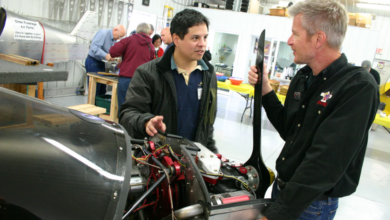Tech Tools That Improve Delivery Speed and Accuracy

With rising e-commerce and customer expectations, businesses face growing pressure to deliver quickly and accurately. Advances in technology now offer tools to streamline operations and improve delivery efficiency. Here’s a look at some of the best tech solutions driving faster, more accurate deliveries.
Why Speed and Accuracy Matter
Today’s consumer expects convenience, precision, and consistency. According to statistics, a delay or delivery error can result in dissatisfied customers who may not return to your brand. On the other hand, timely and accurate deliveries foster trust and customer loyalty. This makes delivery optimization a non-negotiable factor in any business strategy.
Technology is the game-changer here. By integrating specific tools and systems into everyday operations, businesses can seamlessly manage workflows and ensure customer satisfaction.
Key Tech Tools for Improving Delivery Speed and Accuracy
1. Route Optimization Software
Drivers and delivery personnel face numerous challenges on the road, including traffic jams, road closures, and complex routes. Route optimization software is one of the most effective tools for solving these problems. These tools use advanced algorithms and real-time data to calculate the fastest and most efficient delivery routes.
With GPS integration and predictive data analysis, route optimization tools don’t just save time. They also reduce fuel costs, minimize labor expenses, and improve delivery timelines by avoiding foreseeable delays, even for complex shipping routes, like those in Hawaii from the mainland.
2. Real-Time Tracking Systems
Transparency is crucial for both businesses and customers. Real-time tracking systems enable you to monitor deliveries at every stage, whether they’re halfway through a city or at your customer’s doorstep. This technology uses GPS and IoT (Internet of Things) to provide minute-by-minute updates.
Not only does this enhance accuracy by preventing lost packages, but it also boosts customer satisfaction by letting recipients know exactly when to expect their orders. Businesses can address delays quickly, providing proactive communication and solutions.
3. Inventory Management Software
Before a package can be delivered promptly, it must leave the warehouse efficiently. Inventory management software helps businesses keep track of stock levels and ensures all necessary items are in the right place at the right time.
By integrating AI-powered forecasting and real-time updates, these tools reduce errors in picking and packing. Accurate inventory data also supports businesses in planning and restocking, further streamlining the logistical chain.
4. Automated Sorting Systems
Automation in sorting and packaging is another game-changer. Traditional, manual sorting processes are time-consuming and prone to human error. Automated sorting systems use robotics and conveyor belts integrated with scanning technologies to process items quickly and accurately.
These systems reduce bottlenecks in warehouses and distribution centers, ensuring that parcels move from point A to point B with minimal delays. Automation also improves scalability, allowing businesses to easily manage high order volumes during peak times.
5. Mobile Delivery Apps
Mobile apps designed for delivery drivers and personnel are essential tools in modern logistics. These apps offer functionalities like route assistance, proof of delivery (POD), and issue reporting, all on a single platform.
Some apps also allow employees to scan barcodes, capture electronic signatures, and communicate directly with dispatchers. By incorporating mobile delivery apps into your operations, you equip your team with the tools they need to perform efficiently and accurately in the field.
6. AI and Machine Learning
Artificial intelligence (AI) and machine learning (ML) are revolutionizing the delivery industry by offering predictive insights and smarter operational strategies. AI can analyze historical delivery data to predict potential bottlenecks, demand fluctuations, or risks.
For example, machine learning models can identify patterns in customer behavior, allowing businesses to adjust operations to better align with peak order times. By leveraging these technologies, companies can increase both speed and accuracy while making data-driven decisions.
7. Barcode and RFID Scanning
Proper package tracking starts with accurate labeling. Barcode and RFID (Radio Frequency Identification) scanning ensure that items are correctly identified and sorted throughout the delivery process.
These technologies help reduce human error during inventory management, sorting, and transportation. RFID, in particular, provides an edge by enabling wireless tracking, which enhances visibility and reduces the risk of misplaced packages.
8. Drones and Robots
Emerging technologies like delivery drones and robots are gaining traction in the logistics industry. These tools excel in last-mile delivery, especially in areas with high congestion or limited accessibility.
While the widespread implementation of drones and robots is still evolving, early adopters have already seen benefits in terms of speed and cost reductions. With regulations becoming increasingly drone-friendly, this futuristic mode of delivery could soon become mainstream.
Read more: Difference Between Criminal Negligence and Civil Negligence in Transportation Incidents
Benefits of Integrating Technology into Delivery Operations
Investing in the right tech tools offers businesses a host of benefits, including:
- Enhanced Efficiency: With automated processes and real-time insights, companies can eliminate redundancies and optimize operations.
- Cost Savings: Tools like route optimization software and AI forecasting reduce unnecessary expenses like fuel waste or inefficient labor hours.
- Customer Trust: Accurate and timely deliveries reflect positively on your brand, fostering loyalty and encouraging repeat business.
- Scalability: Technology enables businesses to handle increasing order volumes with ease, scaling operations to match demand without breaking a sweat.
Getting Started with Delivery Technology
Implementing delivery technology doesn’t have to be overwhelming. Start by identifying the bottlenecks in your current processes. Are your drivers spending too much time on the road? Is inventory tracking causing delays? Once you pinpoint the challenges, you can select tools tailored to address those specific needs.
Additionally, ensure that your team is properly trained to use new systems. Even the most advanced technology can’t deliver results if it isn’t utilized effectively.
Conclusion
Technology is transforming delivery with tools like AI, real-time tracking, automation, and drones. Adopting these innovations helps businesses improve speed, accuracy, and meet customer expectations.





